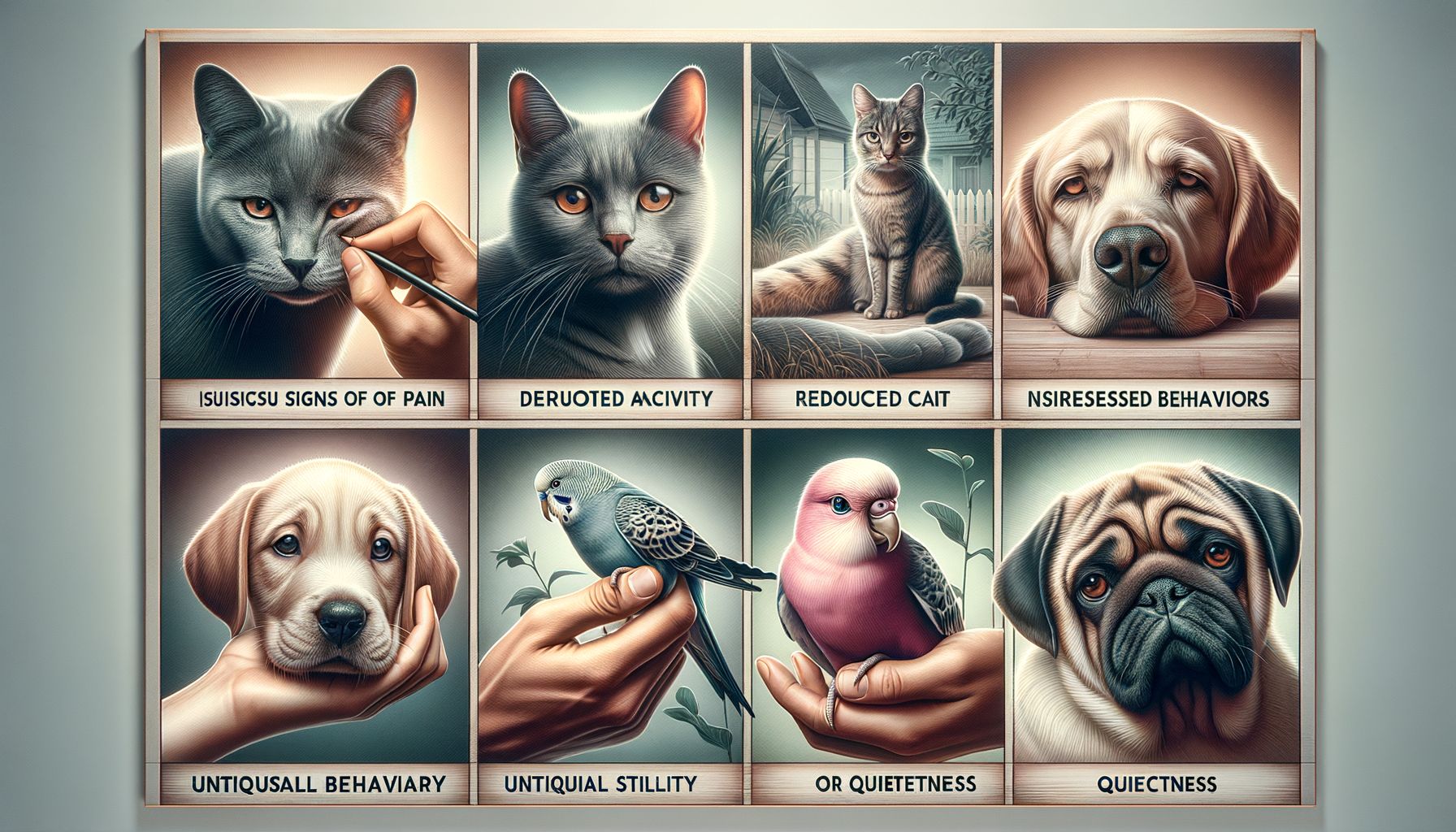
Vets say these quiet behaviors may signal pain in pets
Understanding Subtle Signs of Pain in Pets
Pets, much like humans, can experience pain due to a variety of reasons, ranging from injury to chronic illness. However, unlike humans, pets cannot verbally express their discomfort, making it vital for pet owners to recognize subtle signs of pain. Understanding these signs is essential for ensuring the well-being of your furry companions. Behavioral changes, such as a decrease in activity or a sudden disinterest in favorite toys, can often be the first indicators that something is amiss. Pets may also exhibit changes in their eating or sleeping patterns, which can be easily overlooked but are crucial signs of distress.
For instance, a cat that suddenly avoids jumping onto a favorite perch or a dog that hesitates to go for walks may be experiencing joint pain. Additionally, pets may become more reclusive, opting to hide or isolate themselves in quiet corners. These behaviors, while quiet and subtle, are significant indicators that a pet may be suffering from pain.
Recognizing these signs early can lead to timely veterinary intervention, potentially alleviating the pet’s discomfort and preventing further complications. Engaging with a veterinarian to discuss any observed changes is a prudent step, as they can offer insights and recommend appropriate diagnostic tests or treatments.
Common Causes of Pain in Pets
Pain in pets can stem from various sources, and understanding these can aid in identifying and addressing the underlying issues. Common causes include arthritis, dental disease, injuries, and internal conditions such as urinary tract infections or gastrointestinal problems. Each of these conditions presents its own set of challenges and symptoms.
Arthritis is prevalent in older pets and can lead to stiffness and decreased mobility. Pets with arthritis may find it difficult to climb stairs or jump onto furniture. Dental disease, often overlooked, can cause significant pain, leading to changes in eating habits or drooling. Regular dental check-ups are crucial to prevent and manage this condition.
Injuries, whether from accidents or rough play, can result in acute pain. Signs include limping, swelling, or vocalizations when touched. Internal conditions, on the other hand, may manifest as vomiting, diarrhea, or changes in appetite. Identifying the root cause of pain is essential for effective treatment, and a veterinarian can provide a comprehensive evaluation to determine the best course of action.
Behavioral Changes as Indicators of Pain
Behavioral changes are often the first indicators that a pet is in pain. These changes can be subtle, such as a shift in personality or a decrease in social interaction. For example, a normally playful dog may become lethargic, or a sociable cat may start hiding more frequently. These behaviors are not just quirks but potential red flags that warrant attention.
Other behavioral signs include increased aggression or irritability, which can occur when a pet is in discomfort. A dog that growls when touched or a cat that hisses when approached may be trying to communicate pain. Additionally, pets may exhibit changes in grooming habits. Cats, for instance, may groom excessively in an area that is painful, leading to hair loss or skin irritation.
Monitoring these behavioral changes and documenting them can provide valuable information to a veterinarian. Keeping a journal of any new or unusual behaviors, including their frequency and duration, can aid in diagnosing the issue and developing a treatment plan tailored to the pet’s needs.
Veterinary Interventions and Treatments
Once pain in a pet is identified, veterinary intervention is crucial to provide relief and improve quality of life. Treatment options vary depending on the cause and severity of the pain. For joint pain or arthritis, veterinarians may recommend anti-inflammatory medications or supplements to support joint health. Physical therapy and weight management are also beneficial in managing arthritis symptoms.
For dental pain, professional cleaning and treatment of any infections or abscesses are necessary. In some cases, extraction of damaged teeth may be required to alleviate pain. Pain from injuries may be managed with rest, pain relief medications, and in some cases, surgical intervention.
Chronic conditions such as kidney disease or diabetes require ongoing management, including medication, dietary changes, and regular monitoring. Veterinarians play a key role in developing a comprehensive care plan that addresses the pain while considering the overall health and lifestyle of the pet.
Preventive Measures for Maintaining Pet Health
Prevention is always better than cure, and there are several measures pet owners can take to maintain their pet’s health and minimize the risk of pain. Regular veterinary check-ups are essential for early detection of potential health issues. Vaccinations, parasite control, and routine blood work can prevent many common ailments.
Maintaining a healthy diet and ensuring regular exercise are fundamental to preventing obesity, a common contributor to joint pain and other health problems. Providing pets with mental stimulation, such as interactive toys and social interaction, can also support their overall well-being.
Pet owners should also be vigilant about changes in their pet’s behavior or habits, as early intervention can prevent minor issues from developing into serious health concerns. Creating a safe and comfortable environment, free from hazards, can reduce the risk of injuries. By taking these preventive steps, pet owners can contribute significantly to their pet’s long-term health and happiness.